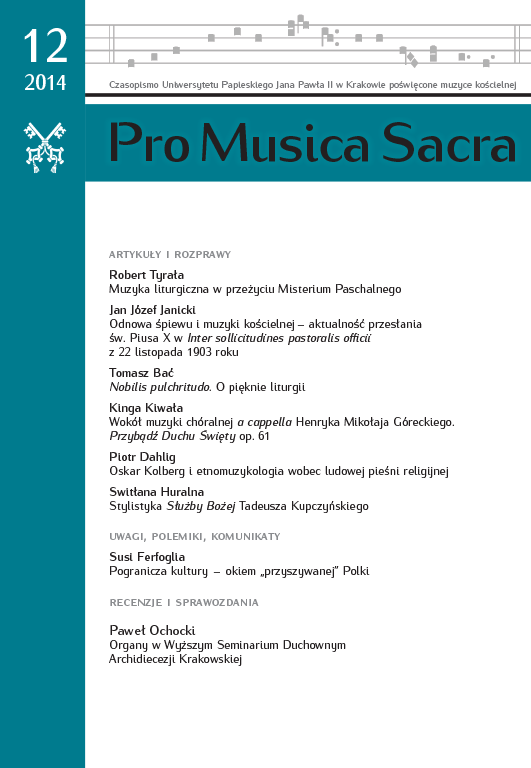Oskar Kolberg i etnomuzykologia wobec ludowej pieśni religijnej
Oskar Kolberg and ethnomusicology in relation to religious songs in living tradition
Author(s): Piotr DahligSubject(s): Christian Theology and Religion, Customs / Folklore, Music, Recent History (1900 till today)
Published by: Wydawnictwo Naukowe Uniwersytetu Papieskiego Jana Pawła II w Krakowie
Summary/Abstract: The text presents a history of research on the Catholic folk singing in Poland with a special regard to works of the greatest Polish ethnographer, Oskar Kolberg (1814– 1890). Karol Kurpiński, a composer and the director of the National Theatre, who was the first to debate on folk music in 1820, had promoted a functional definition of a folk song embracing also religious singing in national language. Anthologies of the texts of folk song edited in 1830s and 1840s put stress, however, on possibly original repertoire of peasants transmitted orally and by memory. Religious songs as being learned basically from prints were usually not included into folklore studies. But culture changes in the course of the 19th century have induced explorers to document also older religious songs in folk use, such as carrols (Michał Marcin Mioduszewski 1843). Oskar Kolberg was concentrated mainly on regional specificity of each part of the country. That is why the standardized repertoire of religious songs performed in churches did not attract much of his attraction. In spite of his preferences, he had written down about 800 religious songs in the whole collection of 20.000 vocal and instrumental pieces. These 800 songs refer to local repertories accompanying the Lenten, Easter, Christmas, the cult of saint patrons and connected with other contexts such as funeral ceremonies. The reason for respecting also religious singing in Kolbergs works was a significance of the oral way of performing resulting in huge amount of variants which were determined also by strictly regional features of traditional singing. Performance practice became a common interest for both ethnomusicology and hymnology since the 1970s, so the more that elements of Gregorian chant have survived in living tradition up till now.
Journal: Pro Musica Sacra
- Issue Year: 12/2014
- Issue No: 12
- Page Range: 131-150
- Page Count: 20
- Language: Polish

